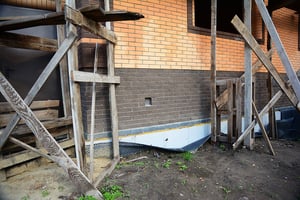Coverage for Faulty Workmanship

Contractors who are sued for faulty workmanship may be surprised to learn they don’t have coverage under their commercial general liability insurance policy.
Imagine a contractor is hired to build a wall around a pool. The contractor uses cheap materials or cuts corners in the construction, and the wall later collapses and damages the pool. The contractor is then sued for the damage to the wall and the damage to the pool. Does the contractor have coverage for the claim? Here’s a look at the various issues that go into determining the answer.
What Is Faulty Work?
When it comes to insurance coverage issues, definitions matter. The definition of faulty work can be incredibly broad, and in some cases, it may be subjective.
In general, workmanship may be considered defective or faulty if it does not meet certain standards. It may lead to safety issues, or it may contribute to property damage or lower property values.
Law Insider defines defective work as “Work that is unsatisfactory, deficient or damaged, does not conform to the Contract Documents, or does not meet the requirements of any inspection, test or approval.”
Does Faulty Work Count as an Occurrence?
The next important question to ask is whether faulty work counts as an occurrence for the purposes of general commercial liability insurance.
Once again, definitions are important. IRMI says that general liability policies insure liability for bodily injury or property damage caused by an occurrence, and an occurrence is “an accident, including continuous or repeated exposure to substantially the same general harmful conditions.”
An occurrence is an accident, and general liability covers bodily injury and property damage caused by an occurrence. But that still doesn’t quite answer the question – does faulty work count as an occurrence?
According to commentary published by IRMI, if faulty work is not considered an occurrence, coverage does not apply. Furthermore, insurers have argued that faulty work does not count as an occurrence when the property damage is to the work itself.
However, the situation is not always black and white. The commentary states that there has been a recent shift in how courts interpret CLG policies to determine coverage for faulty workmanship, leaning toward the idea that these claims may count as an occurrence.
One key case has been Cypress Point v. Adria Towers. This case involved claims that faulty workmanship on the roof contributed to rainwater leaking into the building. The New Jersey Supreme Court held that the event resulting in damage was an occurrence under the CGL policy.
Exclusions for Defective Workmanship
These days, many commercial general liability insurance policies include a faulty workmanship exclusion. Based on the definition from IRMI, a workmanship exclusion excludes coverage from damage to the work resulting from that work or for losses caused by faulty workmanship.
Looking back at the hypothetical wall example, it seems that this exclusion could mean that the contractor in question does not have coverage. The damage to the wall is damage to the work resulting from that work, and the damage to the pool is a loss caused by faulty workmanship.
However, in real life, not all situations are straightforward.
Legal Battles and Proposed Legislation
Faulty workmanship exclusions have sometimes been contested in court. Here are two examples, one that was ruled in favor of the insurer, and another that was ruled in favor or the policyholder.
According to National Law Review, in Rocky Mountain Prestress, LLC v. Liberty Mutual Fire Insurance Co., an insurer denied coverage for the cost of regrouting concrete pillars and columns because (among other things) the loss was excluded by the policy’s exclusions for faulty or defective workmanship. A subcontractor argued that coverage should be restored due to an ambiguous exception, but the court granted summary judgement to the insurer.
In another case, Merlin Law Group says that an appellate court determined that a faulty workmanship exclusion did not bar coverage. In this case, experts agreed the damage was caused by faulty workmanship, wind, or a combination, and the court determined that the workmanship exclusion did not bar coverage for damage caused in part by a covered peril.
New legislation could provide clarification on coverage issues. According to National Law Review, a proposed bill in New Jersey would require commercial liability insurance policies to include faulty workmanship within the definition of occurrence, and it would codify the Cypress Point v. Adria Towers ruling. However, a similar bill that was proposed in 2020 failed to be passed into law, and the fate of this proposal is currently unclear.
Securing Coverage
Mistakes happen. Contractors should be aware of the fact that CGL claims for losses involving faulty workmanship may be denied. Policyholders should review their policies, including how exclusions for workmanship may apply and whether additional coverage is needed.
Do you need help securing construction insurance? Learn more about BNC’s insurance for the construction industry.







